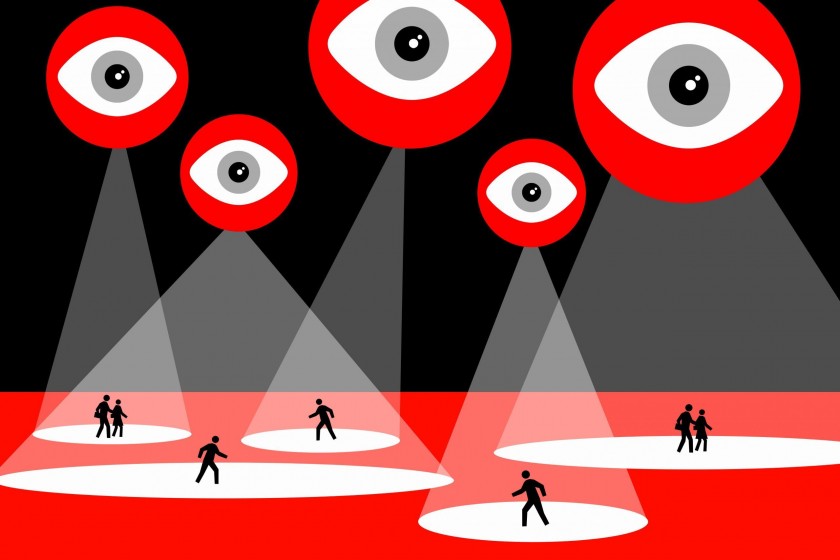The crisis around the world is deepening as a consequence of the COVID-19 pandemic. It is known that the capitalist Great Depression of 1929 created a terrible crisis all over the world, but the crisis of the day is tipped to be worse. The International Labour Organisation (ILO) has already predicted job losses of approximately 195 million workers – 125 million in the APAC region, 15 million in Europe and 0.5 million full time workers in the Middle East – in the second half of the year. Even the high-income countries have not been spared, with an estimated 100 million full time workers from these countries likely to lose their jobs. Owing to the imposition of lockdown across the world to curb the breakout of the pandemic, four out of every five people have already been unemployed.1 Closer home, the latest report from the Centre for Monitoring Indian Economy (CMIE) reveals that 140 million workers have lost their jobs in the country,2 with an estimated 400 million workers on the brink of extensive glaring poverty.3 Worldwide cases of death by hunger and starvation, malnourishment, and lack of access to proper treatment and the exponentially increasing poverty-stricken refugees from low income countries and regions, among other things, further exacerbate the crisis. The signs are already there and would not come as a surprise that the overall crisis would be dire.
When global capitalism was entrenched in a deep crisis in 1929, the ramifications were advertently imposed on the working class to recover from it. However, it is not surprising, given that capitalism in crisis has always resorted to this. Following this legacy, analysts and policy makers in India and elsewhere have begun ringing the alarm bells with cries of “Massive job loss” and “Hunger”, which in reality, are nothing but stern warnings to the working class people to prepare themselves for bearing the burden of the looming capitalist crisis, yet again. A popular mouthpiece of the capitalist machinery, Bloomberg Quint, has reported, “A looming economic crisis triggered by the coronavirus pandemic is a chance for India to enact sweeping reforms to fix ailing sectors and attract more foreign investment to the country.” 4
It is quite evident that the pandemic is nothing but a “golden opportunity” for the capitalists. Former Governor of the Reserve Bank of India, Raghuram Rajan, has also said, “Hopefully, this otherwise unmitigated tragedy will help us see how weakened we have become as a society and will focus our politics on the critical economic and health care reforms we sorely need.” In fact, it is to be noted that India was reeling from a recession even before the pandemic outbreak. It was reported in November last year that the unemployment rate in India broke a 45-year record,5 with 9 million people losing their jobs in the period between 2011-12 to 2017-18.6 Additionally, monthly per capita expenditure on food and other consumer goods has gone down for the first time since 1972-73.7 Thus, it is clear from government data and records how serious the conditions of the working class are. Meanwhile, in midst of all the crisis, the Government of India has been proactive in reforming the Labour Law. Governmental organisations are being sold at takeaway prices, resulting in the possibility of an additional few thousand, if not a few millions, job losses. Since the implementation of demonetisation and GST, small scale industries have been in dire straits, with no chances of revival in sight soon.
Amidst such economic turmoil, it can be well observed that the pandemic has turned out to be a special “opportunity” for the capitalist class. With the lockdown imposed by the government, millions of workers are either stuck at home or are stuck at trying to return home. Although there have been sporadic protests by the workers stuck in various parts of the country, they have been majorly hinged between an outcry to return to their homes and taking their chances at survival, if at all. In fact, there is not much room for a widescale protest either. Seeing this as a perfectly opportune moment, the foremost capitalist institutions of the country – CII, FICCI and ASSOCHAM – met with the Union Minister of Labour proposing suspension of labour laws in the country for the next 2-3 years and implementation of daily shift of 12 hours, six days a week (or 72 hours) against the current accepted norm of 8 hours, six days a week (or 48 hours).8 In the meantime, some states (at the same wage rate) have already issued 12 hours daily work shifts instead of the 8 hours. Governments of Uttar Pradesh, Madhya Pradesh and Gujarat, immediately after the aforementioned meeting, have suspended labour laws for the next three years, essentially suspending any law applicable to labour unrest, accidents at the workplace, health and work environment, trade unions, contract workers and migrant labourers for the next three years. Arbitrary layoffs can be made from any large/medium/small scale factories or organisations.9 Even the minimum wage cannot be claimed. There are various indications that other states will follow the same path, with Karnataka and Uttarakhand the most likely in the immediate future. An editorial column in a popular newspaper claims in exultation, that the states are “showing the way in labour reforms”.10 In an opinion piece “Labour Law Suspension: Hit The Workers When They Are Down”, economist Pranab Bardhan of University of California, Berkeley writes, “I am actually in favour of a thorough overhaul… (but) taking the cover of the pandemic to unilaterally whittle down labour protections is going the opposite way, to distrust, and labour unrest.” 11
With the mentality of transforming workers in a wage-slave condition to complete enslavement of workers in the name of labour reforms, Pranab Bardhan’s piece serves as a warning to the governments catering only to the capitalist needs, of the ensuing “unrest” that might follow. In fact, the ruling class is very well prepared. They seem quite rehearsed in how to eliminate labour unrest as well as other possibilities of various protests nationwide.
Apart from the bourgeoisie and the landlords, the rulers of the country also represent the interests of the rural and urban aristocracy and a major chunk of the middle class – including the upper caste Hindus, especially the Brahmins and the ‘Baniyas’ or the merchants, small and big shopkeepers, and even the economically upper echelons of the Shudra (OBC) population. They are not only accountable to the capitalists, landlords and the wealthy in their governance but also to the upper caste Hindus. Thus, their governance serves a lot of vested interests aimed to please the capitalist class in the form of reforms, concessions, massive profits, relaxation of environmental laws (with further relaxations planned during the lockdown period), displacement from water-land-forests, the so called “development” and suppression of labour unrests, while at the same time, firmly resolute in establishing a fascist regime under the Hindutva ideology and determined to silence any possible opposition to it. Their view of the opposition to such a regime is not just restricted to the entire Muslim community, Dalits, Adivasis and the working class people but also to any “disobedient” intellectuals, historians, scholers and students – basically, the ones who would not be swayed by their propaganda of unscientific consciousness, superstitions, pompous tales of the ‘Hindu’ myths and worship of the “Gomata”. They do not have any shortage of weaponry to suppress the voices of dissent whatsoever.
During the pandemic, a mobile application, usable on any smartphone platform, by the name of “Aarogya Setu” was launched on 7th April. This app is to be kept with everyone; requires uploading of all personal information and must always have Bluetooth and GPS enabled, such is the rule. With the help of this app, one would receive a message if the person has been in contact with a Corona affected individual. That same message shall also be received by the government. Through this process, the government will be able to know the infected individuals, the quarantined individuals and whether they are following the safety protocols among other things. 373 million of Indian citizens possess a smart phone.12 If all of them followed these instructions of the government, a large section of the city dwellers and a prosperous population of the country can be very easily monitored. Even blood pressure, blood sugar levels and heartbeat rates can be monitored. However, the question has risen whether this app will serve as a tool for surveillance over the citizens. Given the fact that the app was developed by Paris based cyber security consultancy firm Defensive Lab Agency, the possibility of such surveillance falling on the laps of foreign agencies or governments cannot be ruled out.13 Former Supreme Court Judge B N Srikrishna has called out the government diktat of mandatory use of Aarogya Setu app, calling it “utterly illegal”.14
But are the questions or doubts that have been raised on whether citizens are being monitored unjust? Let us take the example of Karnataka. The Karnataka government has introduced the “Quarantine Watch” app to smartphone users, where users are mandated to send a selfie to the government every hour from seven in the morning to nine in the night, specifying their location. A few municipalities in Telengana have introduced an app that automatically activates mobile phones, while users are required to fill up a form and send selfies periodically. In Kerala, “Virus Detective” is monitoring patients’ movements by using CCTV footages. Srinagar, Gujarat, Andhra Pradesh and Punjab are also following a similar pattern.15 In Madhya Pradesh, the personal information of 5400 people have been leaked through the app, even displaying them on government website!16 It has also been suggested that the download of the “Aarogya Setu” app be made mandatory for air passengers. Essentially, questions about the intentions of the government are being raised because there have been examples in the recent past of the government monitoring the citizens, thereby collecting all information on them. In fact, there have been incidents of such information going into the hands of private entities as well. Many other countries in the world like South Korea, China, Singapore, Russia, Israel, Taiwan, Poland, Italy, and others have also been known to be monitoring their citizens. But that is another discussion altogether!
The surveillance process in India, however, had begun long before the outbreak of COVID-19. According to a Business Standard report, the Indian government has started using National Automated Facial Recognition System (NAFRS) a few months ago. The system can store facial identity of individuals, photographs in newspapers, images from CCTV feeds, and even recognition from tattoos and scars. Thus, the government will have access to facial and background recognition.17 Any individual who attends a public meeting, rally or a protest demonstration can be easily identified. Such facial recognition has already been used, like on 22nd December 2019, when the Delhi Police used the technology to identify “rabble-rousers and miscreants” at a Narendra Modi’s Ramlila Maidan event.18 Also, from the RTI filed by Livemint to find out how the perpetrators of Delhi riots were identified and the statements by the Home Minister in the Parliament, it has come to public knowledge that the government used the aforementioned facial recognition technology along with the voter identity card and the driving licence to identify 1,100 individuals, out of which 300 were from Uttar Pradesh. It is worth mentioning here that a Supreme Court advocate has opined that identifying “criminals” with the facial recognition technology in illegal in the country.19
The controversial and much debated Aadhaar card had already paved way to access individual information to convict citizens having an opposing view as “suspicious” or “criminal”. The apparent purpose of the Aadhaar was to extend the reach of subsidised food grains and daily essentials to the poor and plug the leakages in the welfare schemes. Biometric data for all citizens, including fingerprints and iris scans, were taken for the card. Given that one does not require such extensive biometric data of all citizens to provide subsidies to the poorest section of the economy, citizens’ grievances were logically redirected at the government’s doorstep. Well known economist and social scientist of Indian Institute of Management Ahmedabad, Reetika Khera, has said that the government has been using Section 7 of the Aadhaar Act to conduct full fledged surveillance over its citizens. Even information like what one eats, where one goes, who one meets, what one buys, where one travels, financial details, how one spends and various other personal information is available with the government and it can use it whenever it wishes to. Moreover, none of the volunteers who were hired at the time of Aadhaar registration, are now associated with the process. They are currently associated with various private business organisations. Thus, Reetika Khera is confident that citizens’ information is now in the hands of the private sector.20Huffington Post has reported that during the NRC process in Assam, all Aadhaar related information of the applicants will be under the control of the state’s Home and Political department for “tracking of suspected illegal foreigners when they move to other states and restrict their access to government documents and services”.21 Hence, it is nothing but a child’s play now for the government and the state machinery to conduct surveillance over its citizens.
There is also a possibility of a more dangerous surveillance mechanism. In 2011, the incumbent UPA government at the time had decided to conduct a socio-economic census which would have served a purpose similar to that of the Aadhaar, that is, ensuring extensive reach of the welfare schemes to the poorest section of the society. The project has now been expanded to include the National Social Registry System. By analysing the details of an RTI filed by the Huffington Post, the concerned media has reported that this project would make information like movement of citizens across cities, changing occupations, buying new property, details of birth or death in the family and marriage details among other things readily available to the government. The project is slated to launch in 2021 with the World Bank, which has contributed $2 million, involved as well. As a result, “whatever is personal today” will not only be available to the government and the administration, but by linking it to the Aadhaar details, it will create a huge database of 1.3 billion citizens of the country. Irrespective of whether one is an upper caste Hindu or a Shudra, Adivasi or minority community, “anti-national” or “intruder”, this database containing details of religion, caste, monthly income, property owned, education level, relationship status, occupation, disabilities and one’s entire lineage can be monitored readily by the government. In this way, a full-scale mass surveillance system can be implemented which would be extremely tight to skip away from. Moreover, it can be heard that the obtained information would be available with foreign agencies as well.22 Besides, there is also the Privacy Bill lined up which shall give credibility to the government holding such personal information with itself in the name of national security!23
Thus, a mass scale surveillance system has been devised to monitor and keep an eye on every individual in the society and thereby, suppressing voices of dissent. Through this, the government wants to nip any voices of dissent in the bud by profiling citizens on the basis of labour leaders against the suspension of labour laws or protestors agitating against the proposed Citizenship Act or individuals unwilling to toe the lines of the government and influencing others to do the same or persons refusing to chant “Bharat Mata ki Jai” and “Vande Mataram” or just refusing to be fascinated by the past Hindu myths. In Germany, special targets were held prisoners in concentration camps in barbaric conditions. With the progress of technology, it is now possible to transform an entire country into a concentration camp.
But are these anxieties unfounded? According to the figures released by the National Crime Record Bureau last year, a new parameter has been added – “Crimes by Anti National Elements”. This shall include among other things, ‘North-Eastern Separatists’, Naxalites, Left Extremists and Terrorists (including jihadi terrorists).24 Hence, anyone can be labelled an “Anti-National” now. In December last year when the protests against the Citizenship Act was gaining momentum, the government had banned the media from reporting any news that was “anti-national”.25 Uttar Pradesh Chief Minister has said that anyone chanting the “Azadi” slogan shall be booked under the Sedition Act!26 The manner in which eleven prominent figures have been imprisoned under the UAPA Act in consequence of the Bhima Koregaon incident (where the RSS attacked an assembly of Dalits) makes one wonder that any citizen not in approval of the government policies shall be labelled an “anti-national” and made to rot in jail. Meanwhile, the percentage of Muslims, Dalits and Adivasis in Indian jails has rapidly increased in proportion to their population percentages in the country. Percentages of Muslims, Dalits and Adivasis in jails are 19.7%, 21.6% and 11.8% respectively while their population percentages in the country are 14.2%, 16.6% and 8.6% respectively.27 10,000 Adivasis who took part in the Pathalgadi movement in Jharkhand last year were charged with “anti-nationalism”.28 Such events are not isolated at all. The way protesters and activists have been rounded up in jails for demonstrating against the Citizenship Act paints a picture that is not faraway from a country wide concentration camp.
However, it would be wrong to assume that this monitoring project is utilising a “from the top” approach – involving the judiciary, bureaucracy, or the law enforcement – to take these “appropriate” measures. At the ground level, a fascist infantry force has been built up nation-wide with the help of the Sangh Parivar to keep a close eye on “Love Jihad”, protection and consumption of beef, etc. The Muslim and the Dalit communities in particular, have been the subject of such “monitoring”, which includes beating up and killing them. Repeated attacks on dissenting voices of students and murders in broad daylight of Dabholkar-Kalburgi-Panesar-Gauri Lankesh have also been executed. All in all, the preparation of fascism is in full swing right from the bottom to the very top.
In this context, it would serve as a great reminder to remember the Home Minister’s significant statement while tabling the UAPA Amendment Bill in the Parliament. He said, “An individual’s psychology is the birth-place of Terrorism, rather than an institution. If, in the first place, an individual is stopped from attracting other individuals into terrorism by providing ideological and financial support, this menace can be finished.”29 For the ruling elite, differing opinions of people is confusing and their minds very dangerous. Apart from “Hindutva”, any other ideological propaganda needs to be stopped, once and for all. Any anti-capitalist propaganda needs to be thwarted. Therefore, the UAPA Amendment Act shall not target groups alone, but the targets shall be set at the individual level. In other words, monitoring at the individual level is becoming overtly necessary for the ruling class.
The reality is becoming clearer by the day. The imposed lockdown shall be lifted one day or the other but the COVID-19 disease shall continue to be in the society, just like malaria, dengue, chickungunya or any other infectious disease. The common man will have to live with it. But will the use of the Aarogya Setu app be discontinued? The use of this app has already been made compulsory for all governmental and non-governmental employees.30 Of course, the way the entire surveillance system has been set up is meticulously planned. It can be said without a doubt, that even if the Aarogya Setu app is disbanded, there are enough organised monitoring systems in place. Slowly, steadily, and stealthily, the “world’s largest democracy” India is becoming the world’s largest surveillance state.
Update Study Group, 12.05.2020
References:
- 08.04.2020, https://www.thehindu.com/news/national/about-400-million-workers-in-india-may-sink-into-poverty-un-report/article31286609.ece; accessed 22.04.2020.
- 24.04.2020, Anandabazar Patrika.
- See Reference in 1.
- 09.04.2020, https://www.bloombergquint.com/global-economics/virus-crisis-is-a-chance-for-india-to-finally-reform-its-economy; accessed 24.04.2020.
- 24.11.2019, https://www.business-standard.com/article/economy-policy/govt-releases-5-survey-reports-after-uproar-holds-back-study-it-junked-119112300873_1.html; accessed 31.12.2019.
- 01.11.2019, https://indianexpress.com/article/business/economy/india-employment-rate-study-azim-premji-university-6097024/; accessed 31.02.2019.
- 15.11.2019, https://scroll.in/latest/943803/consumer-spending-fell-for-first-time-since-19, accessed 31.02.2019.
- 08.05.2020, https://economictimes.indiatimes.com/news/economy/policy/lockdown-hit-industry-demands-suspension-of-labour-laws-for-2-3-yrs/articleshow/75633578.cms; accessed 10.05.2020.
- 09.05.2020, https://www.business-standard.com/article/economy-policy/up-govt-to-exempt-businesses-from-all-but-three-labour-laws-for-3-years-120050701531_1.html, accessed 10.05.2020.
- 09.05.2020, https://timesofindia.indiatimes.com/blogs/toi-editorials/stoking-the-engine-adityanath-shows-the-way-with-labour-reforms/, accessed 09.05.2020.
- 10.05.2020, https://www.bloombergquint.com/opinion/covid-19-and-labour-law-suspension-hit-the-workers-when-they-are-down, accessed 10.05.2020.
- 14.04.20, https://thediplomat.com/2020/04/covid-19-boosts-indias-growing-surveillance-state/; accessed 16.04.2020.
- See Ref. in 11; 17.04.2020, https://scroll.in/article/959364/the-aarogya-setu-app-endorsed-by-modi-to-tra; accessed 22.04.20. 06.05.2020, https://www.groundxero.in/2020/05/06/is-aarogya-setu-a-new-method-to-keep-citizens-under-surveillance/; accessed 10.05.2020.
- 12.05.2020, Indian Express.
- See Ref. in 11; 13.04.2020, https://scroll.in/article/958966/how-indian-states-are-using-surveillance-techn; accessed 13.04.2020.
- 11.05.2020, https://www.hindustantimes.com/india-news/mp-app-to-track-patients-leaks-personal-data-taken-offline/story-WO7ATpaxOMDTsmUxSKduUO.html; accessed 11.05.2020.
- 08.11.2019, https://www.business-standard.com/article/current-affairs/govt-extends-bidding-deadline-for-facial-recognition-for-the-third-time-119110800605_1.html; accessed 09.11.2019.
- 29.12.2019, https://thewire.in/government/delhi-police-is-now-using-facial-recognition-software-to-screen-habitual-protestors; accessed 30.12.2019.
- 12.03.2020, https://www.livemint.com/news/india/delhi-violence-govt-using-voter-id-driver-s-license-data-to-screen-rioters-11583942865054.html; accessed 08.05.2020.
- 01.10.2018, https://www.livemint.com/Politics/0LTYZzCHQb9X6UFsn09lBI/Aadhaar-verdict-big-data-meets-big-brother.html; accessed 08.05.2020.
- 11.07.2019, https://www.huffingtonpost.in/entry/aadhaar-fears-coming-true-in-assam_in_5d26956be4b0cfb59600624f; accessed 08.05.2020.
- 17.03.2020, https://www.huffingtonpost.in/entry/aadhaar-national-social-registry-database-modi_in_5e6f4d3cc5b6dda30fcd3462; accessed 23.03.2020.
- 11.12.2019, https://indianexpress.com/article/india/govt-agencies-get-wide-powers-to-call-for-personal-data-in-privacy-bill-6160712/; accessed 14.12.2019.
- 23.10.2019, https://scroll.in/article/941383/new-national-crime-data-report-contains-baffli; accessed 31.12.2019.
- 13.12.2019, https://scroll.in/article/946488/dissent-is-anti-national-in-modis-india-no-matter-where-it-comes-from; accessed 13.12.2019.
- 09.02.2020, https://www.newsclick.in/azaadiphobia-who-afraid-freedom-why; accessed 11.02.2020.
- 12.02.2020, https://timesofindia.indiatimes.com/india/in-a-minority-but-a-major-presence-in-our-prisons/articleshow/73266299.cms; accessed 08.05.2020.
- 19.11.2019, https://scroll.in/article/944116/10000-people-charged-with-sedition-in-one-jh; accessed 19.11.2019.
- 29.07.2019, https://countercurrents.org/2019/07/uapa-amendment-another-nail-on-the-coffin-of-democracy/; accessed 30.07.2019.
- 01.05.2020, https://thewire.in/government/home-ministry-aarogya-setu-office-workers; accessed 08.05.2020.








